Microcinemas are booming in New York City — here’s where to find them
The larger theater industry may be struggling, but small independents are having a moment
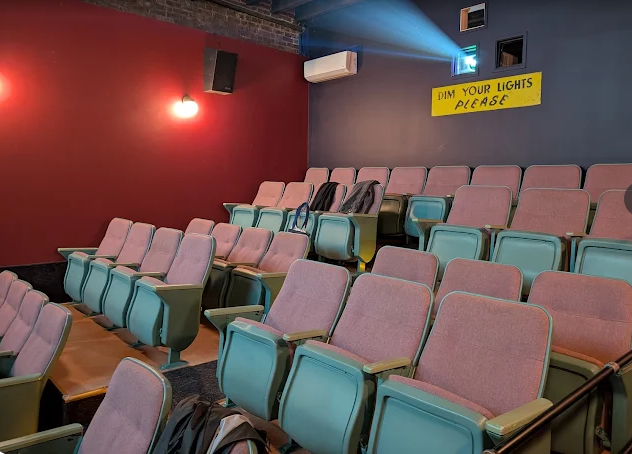
Ask 100 people in the industry about the state of the movie business in 2025, and you’re likely to get 100 variations on the same answer: things are bad. Reporting on the economics of mainstream movie theaters generally ranges from the apocalyptic to the merely bleak, with a host of familiar explanations for the decline: a persistent post-COVID hangover, the dominance of streaming resulting in shorter theatrical windows and less motivation to get off the couch, and the general shrinking of theatergoing audiences (which may have something to do with the increasingly dire multiplex offerings themselves).
The fault lines may be widening for AMCs and Regals of the world, but a newer element of New York’s ever-resourceful film culture has flowered in the cracks: the microcinema. There’s a great deal of diversity even within this substratum, but for the purposes of this article we’ll define the microcinema as a single-screen venue with fewer than 100 seats, distinguishing them from larger, multi-screen arthouse and repertory theaters like Film Forum, Metrograph and Lincoln Center. Their operators range from volunteers to HBO stars, the films they show from the impossibly obscure to the massively beloved. But they all offer something sorely missing from today’s hyper-online film culture.
“Authenticity” is that something, according to Jess Hamilton, cinema operations manager at DCTV’s Firehouse Cinema in Lower Manhattan. “It's community. I think we have a different generation of kids and young adults and millennials that are done with Marvel movies. They're done watching these like bigger-than-life films that don't mean anything.” And as her colleague Dara Messinger, director of programming at the Firehouse points out, the smaller scale and more niche audiences that microcinemas appeal to enable them to present an alternative. “Most theaters are only working with bookers and distribution companies,” Messinger told me. “I work with a lot of filmmakers directly. And so these are incredible films, but just because they don't have distribution doesn't mean that they shouldn't have an opportunity to screen.”
New Yorkers are hardly suffering from a lack of moviegoing options these days, but the alternative model proposed by microcinemas allows programmers to cast an even wider net in trawling the depths of film history. Even the most seasoned cinephiles are unlikely to recognize many of the titles playing on any particular week at Williamsburg’s Spectacle Theater, which is precisely the point. A nonprofit theater owned and operated entirely by volunteers (of which, full disclosure, I am one), Spectacle’s low overhead enables programmers to express their tastes and bring underseen work to light without the requirement of solid financial returns. The same is true of Greenpoint’s Stuart Cinema & Cafe, which alternates between wide-release and smaller independent titles. “We don’t have the same pressures that the larger theaters have,” says owner Emelyn Stuart, adding, “I have more flexibility in my programming.”
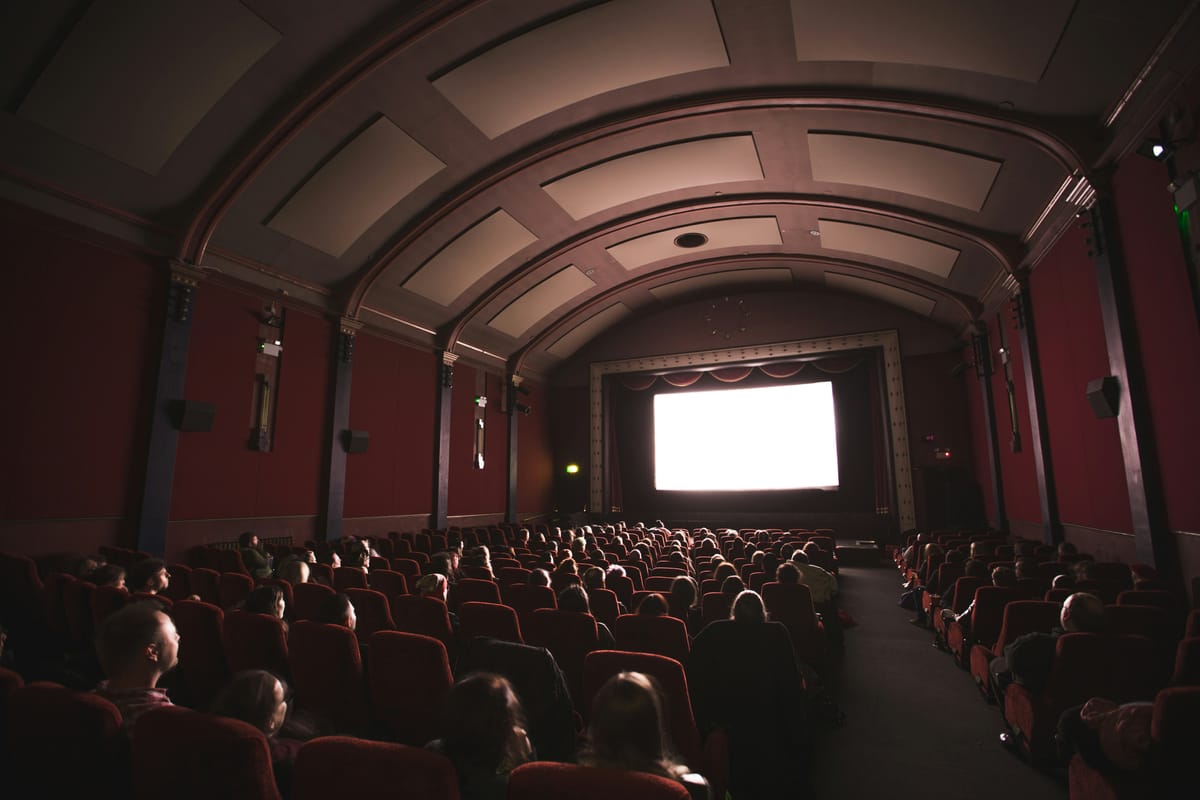
The microcinema boom in New York can’t be understood without taking into account sources of supplemental income like theater rentals, which can be for parties, private screenings for filmmakers, meeting spaces for community groups, or even filming inside the theaters – an upcoming indie film called The Projectionist uses Film Noir Cinema as the exterior and Spectacle as the interior for its main set. The former theater’s owner Will Malitek told me that ticket sales make up such a small part of his revenue compared to theater rentals that he cares little how many people show up to any given film – an attitude reflected by the theater’s deep-cuts-only offerings.
DCTV and Harlem’s Maysles Documentary Center also feature educational workshops and production facilities, becoming centers of activity around cinema far beyond the films they show. “We're not just the cinema and we're not just a youth media program and we're not just an educational center and we're not just a production company,” says Messinger. “We're constantly having to reshape and rejigger to be as sustainable as we can, because we can't keep doing things the way we were always doing it.”
That democratization of access to cinema is essential for Stuart, who notes that she’s the city’s first Afro-Latina theater owner. The Stuart Cinema offers programs like discounted tickets for recipients of SNAP benefits, screenings for seniors transported to the theater via Access-A-Ride, and Spanish audio for non-English speakers through the Theater Ears app. “I view movie theaters as a gathering space,” Stuart told me. “Movies are for everyone, for the poor, for the rich, for the young, for the old.” She plans to open a second location in Brownsville soon, an intentional attempt to help invigorate an economically disadvantaged community. “‘We don't want to stay here because you guys are criminals and we don't trust you,’” is how Stuart describes other businesses’ view of the currently theater-less neighborhood. “I am saying I am not afraid of my own people. This is ridiculous.”
Of course, audiences aren’t the only people reaping the benefits of microcinemas – for many filmmakers, they represent the best hope of seeing their work in a theater. Stuart was motivated to open her theater by her experience as a film producer, where she found that the industry “doesn’t give a shit about independent filmmakers.”
Q&As and other in-house events with filmmakers have become a major selling point for several microcinemas, driving attendance and encouraging further engagement with the work. “We're giving a voice to the voiceless,” Hamilton told me. “These are people that have spent the last 10 years working on this film, editing or coloring or whatever it is. They've spent their whole careers working on a few films and now they get to actually put it before an audience.”
Below you can find a rundown of New York’s microcinemas, along with a brief summary of their programming. Narrowing down the list was an imprecise art – there are a few spaces with screening rooms, like Ridgewood’s Woodbine, that could qualify but are primarily arts spaces with irregular film showings. Film production spaces like Millennium Film Workshop and Mono No Aware also host screenings, though it’s not their central purpose. On the other hand, the Roxy Cinema in Tribeca is a modestly sized single-screen cinema, but something about a theater attached to a luxury hotel doesn’t seem to fit the bill. Each entry on the list is well worth checking out in its own way, both for the films themselves and to contribute to this vital element of the New York art world.
Cinema on the Sound:
The most far-flung of New York’s microcinemas, Cinema on the Sound was opened in the Bronx’s City Island in 2022 by owner Peter Gennari and manager / curator Jerry Landi, a filmmaker known for his no-budget Bronx-set horror films (Krackoon and Bloodmarsh Krackoon, a diptych about crack-addicted mutant racoons, seem representative of his work). The programming centers on genre classics from the ‘70s and ‘80s, projected on a wall in a 50-seat theater – recent offerings have included The Rocky Horror Picture Show and The Monster Squad. The lo-fi quality extends to the theater’s online presence, which is limited to an Instagram page that curtly announces each screening.
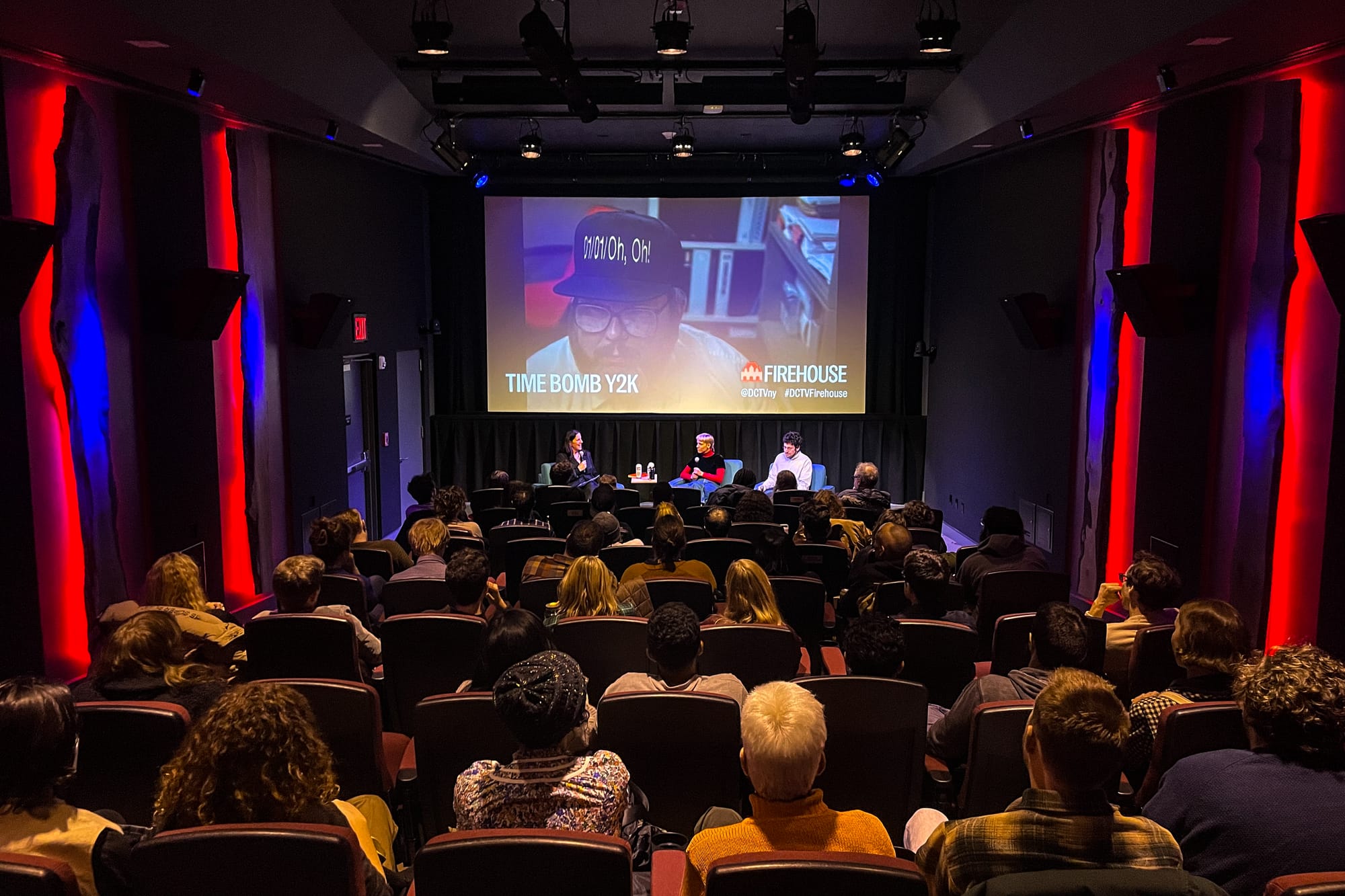
DCTV Firehouse:
Perhaps the most well-appointed space on the list is the DCTV Firehouse, located on the Chinatown-Tribeca border. DCTV, or the Downtown Community Television Center, was founded in 1972 as a nonprofit focused on fostering community-based nonfiction filmmaking. The DCTV Firehouse was opened in the former Engine Company 31 Firehouse, a gorgeous French chateau-inspired historical site on Lafayette St, in 2022 (the theater pays tribute to the building’s origins with a fire truck grill and windshield adorning their concessions booth). Their programming is exclusively documentary-focused, though this encompasses new releases and repertory runs, as well as frequent events and Q&As with filmmakers. Recent first-runs include Riefenstahl, a study of Nazi propagandist Leni Riefenstahl, while 20th anniversary screenings of I Like Killing Flies, a portrait of legendary New York restaurateur Kenny Shopsin offer something on the lighter side. The Firehouse also houses a full post-production studio and educational spaces for filmmaking workshops.
E-Flux Screening Room:
E-Flux began as a digital publishing platform, email service and artist group in 1998, eventually opening its Clinton Hill screening room in 2021. Screenings at the seventy–seat space are the sparsest of any cinema on this list, but mostly focus on experimental and video work - shorts programs by Ukrainian filmmakers and the conceptual artist Lawrence Weiner are some of the latest examples.
Film Noir Cinema:
The one-man-show of the NYC film world, Film Noir Cinema is owned and operated entirely by Polish emigre and devoted cinephile Will Malitek out of a former funeral home in Greenpoint. Screenings alternate between weekly mystery series (Film Noir Mondays, Cult Cinema Tuesdays, and Film Club on Thursdays - it’s hard for a rights holder to come after you if you don’t announce what you’re playing) and pre-announced titles both old and new. Malitek’s taste runs toward the macabre and transgressive, which along with his disinterest in publicity has contributed to a certain air of mystery around the theater. Still, Film Noir acts as host to popular recurring events like Terror Terroir (in which a horror film is paired with a wine tasting) and Smootaphilia (in which sexually charged fare is accompanied by a live score by the “Ensemble Erotic”), alongside films like Vampire Zombies… From Space (2024) and the brilliant Italian murder mystery Closed Circuit (1978), to name two October titles. Perhaps most uniquely, Malitek sells LPs and DVDs from his massive collection out of the cinema’s lobby, a holdover from the cinema’s origins as a DVD rental shop.
The Film-Maker's Co-op:
Like the Firehouse, The Film-maker’s Co-op is not exclusively a microcinema, but a more holistic film organization focused on educating, supporting and preserving the work of independent filmmakers. The Co-op was founded in 1961 by a group of artists that included such legendary New York avant-garde filmmakers as Jonas Mekas, Shirley Clarke, Ken and Flo Jacobs and Jack Smith. Screenings at the cozy Co-op screening room are irregular and focus on rare and experimental work by artists who worked at the margins of the industry, but at the forefront of innovation in the medium. The last film I saw there was a 16mm print of Water and Power (1989), Pat O’Neill’s seminal avant-garde survey of Los Angeles, while experimental filmmaker and Co-op Board of Advisers member Lynne Sachs recently presented her documentary The Washing Society (2018).
Light Industry:
Light Industry has bounced around a few Brooklyn locations since its 2008 founding by film programmers Ed Halter and Thomas Beard, but its current location in East Williamsburg – an industrial building beautifully converted into a spacious cinema – feels like a keeper. Their programming is grounded in a left-wing political and historical consciousness, but displays an astonishing range of work informed by that perspective. Whether showing Japanese films from the ‘30s produced on paper, a 16mm print of the 1949 noir The Crooked Way, or a selection of kid-friendly movies partly programmed by a child, Light Industry certainly lives up to its mission statement as “a venue for cinema in all its forms.” Overseen by a board that includes filmmaker Kelly Reichardt, Light Industry also publishes academic texts on cinema and frequently features discussions from critics and artists along with their programs.
Low Cinema:
The newest and trendiest of the NYC microcinemas, Low Cinema was founded in 2024 by John Wilson, creator and star of HBO’s How To With John Wilson, along with business partners David Fowlkes and Cosmo Bjorkenheim. Its Ridgewood location maintains a casual, hangout atmosphere despite its celebrity associations, its walls papered with promotional ephemera from ‘90s and ‘00s Hollywood. The films on display split the difference between more obscure documentary works in line with Wilson’s own style of personal nonfiction filmmaking and beloved mainstream titles – their first public screening was of the “Dirtier Cut” of the seminal 1998 Norm MacDonald vehicle Dirty Work, while the New York Times documented a showing of Stanley Kubrick’s Barry Lyndon for which theater staff donned period-appropriate 18th-century costumes. The occasional “16mm Night” offers a mystery film screened on 16mm film.
Maysles Documentary Center:
As its name suggests, the Maysles Documentary Center was founded by Albert Maysles of the famed Maysles Brothers team of documentary filmmakers (Salesman, Grey Gardens). Having opened its Harlem screening space in 2005, the Center is the longest-running microcinema in the city. Programming primarily though not exclusively features documentary films, and is strongly geared toward work that addresses political and social issues around the globe, both in the city at large and in Harlem specifically. Recent showings have included Lebanese filmmaker Heiny Srour’s anti-imperialist masterpiece Leila and the Wolves (1985) and Reflections in Synagogue (2024), a portrait of Manhattan’s synagogues and their place in New York’s Jewish history. Like DCTV, the Maysles also offers educational programs for aspiring documentary filmmakers.
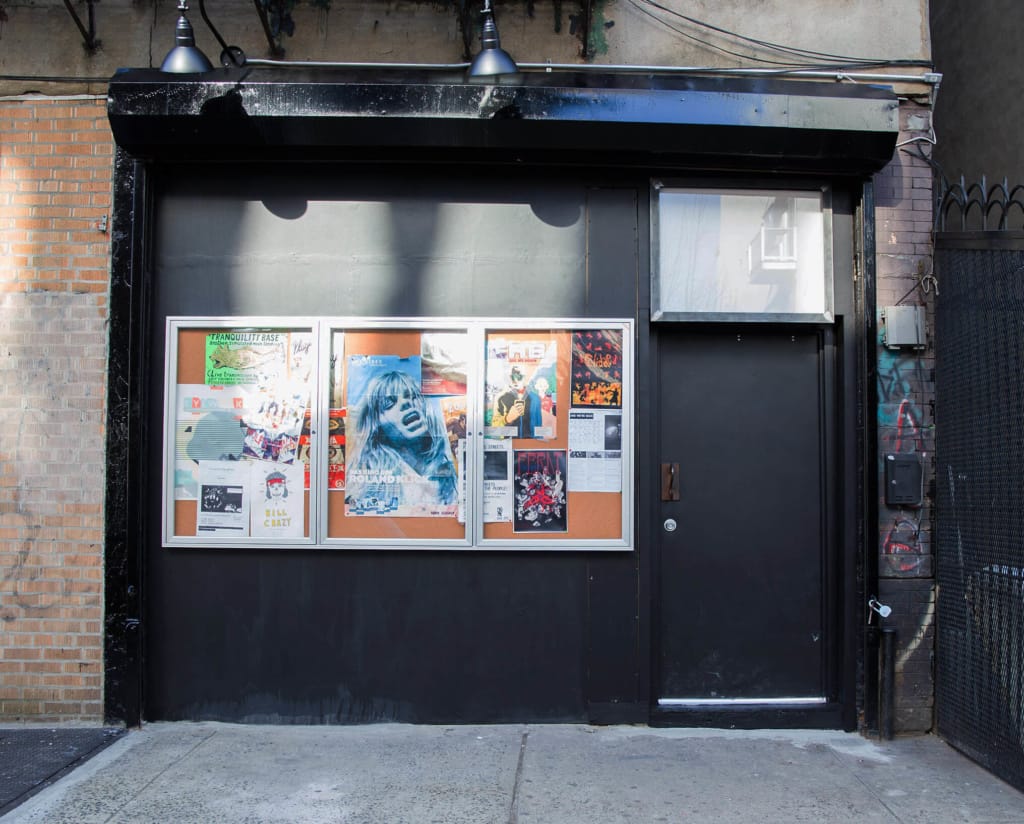
Spectacle Theater:
As I stated above, I’m a Spectacle volunteer, so my opinion could not be more biased, but to me it is the quintessential NYC microcinema. Entirely owned and operated by a non-hierarchical collective of volunteers, Spectacle’s not-so-secret formula is the mixture of an informal, DIY vibe and a staggering range of programming with a rigorously non-commercial and anti-capitalist ethos, with tickets still going for $5 a pop. In addition to staffing the theater and programming the films, Spectacle volunteers create posters and trailers for the movies shown, which can range from bargain-bin ‘70s martial arts flicks or shot-on-video splatter horror to 16mm experimental programs or nonfiction films of political struggle. The common element across all the programming is a dedication to marginalized and underseen works, as Spectacle rarely screens anything that has shown in New York in recent memory. Those looking for a primer should check out Best of the Best of Spectacle, a series of defining films shown throughout its 15-year history that will run through next year – Soviet rock n’ roll epic Assa (1987) and Jon Moritsugu’s underground dispatch Mod Fuck Explosion (1994) kicked off the series with a bang.
Stuart Cinema & Cafe:
Having recently added a second screen, Greenpoint’s Stuart Cinema doesn’t technically fit with my definition of a microcinema anymore, but its independent nature and commitment to expanding accessibility to disadvantaged moviegoers earns it a spot. It is the only theater on the list that regularly shows new wide-release films, though the second screen will allow for more independent programming as well – the locally-produced indie Brownsville Bred recently enjoyed a run at the venue. The cafe provides plenty of food options for events like $8 ticket Wednesdays, as well as free coffee or tea for morning showings and a free shot of booze for those at night.

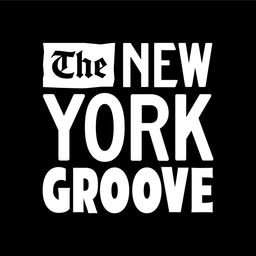

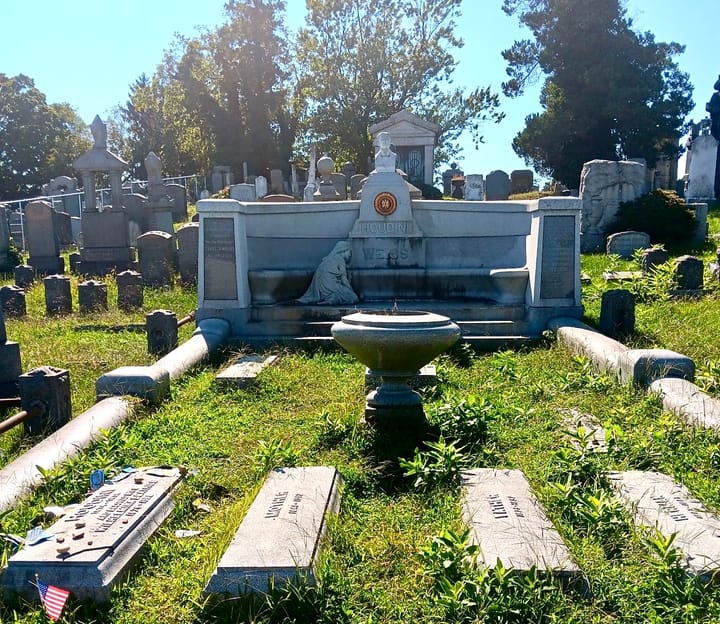

Comments ()